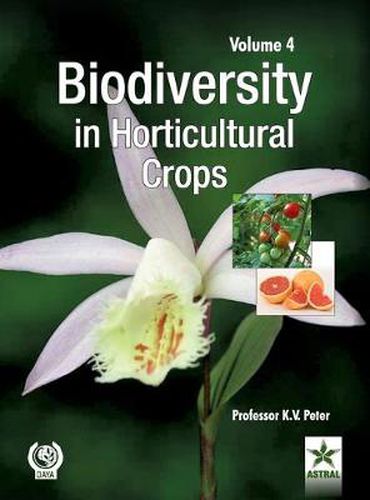Readings Newsletter
Become a Readings Member to make your shopping experience even easier.
Sign in or sign up for free!
You’re not far away from qualifying for FREE standard shipping within Australia
You’ve qualified for FREE standard shipping within Australia
The cart is loading…






This title is printed to order. This book may have been self-published. If so, we cannot guarantee the quality of the content. In the main most books will have gone through the editing process however some may not. We therefore suggest that you be aware of this before ordering this book. If in doubt check either the author or publisher’s details as we are unable to accept any returns unless they are faulty. Please contact us if you have any questions.
Biodiversity of Horticultural Crops-their conservation, documentation, characterization, morphological and molecular description, bioprospecting and studies on uses and product development- are assuming considerable significance. Biodiversity is even described as wealth of nation and even linked to wellness and happiness of man and fitness of planet earth as his abode. Climate change, natural disasters like flood, drought, earthquakes and hurricanes and above all
greed of man are shrinking the biodiversity spectrum. Number of plants in red data book is on rise and plants getting extinct are increasing- recorded and unknown-. There is limited interest in the profession of taxonomy. Recent legislative measures - Biodiversity Act, Plant Variety Protection and Farmers Right Act and Geographical Indication and Intellectual Property Act- would reveal the commitment of Government of India to the conservation of biodiversity. Plants are worshipped and they were conserved in sacred groves, heritage sites, plant parks and botanical gardens. The mangroves near coastal areas are places of co-existence of plants and fauna. The present Volume IV BIODIVERSITY OF HORTICULTURAL CROPS is a continuation of earlier volumes with emphasis on sacred groves and heritage sites. A few underexploited crops are also covered. The contributors are eminent working scientists who have spend their lifetime in research and teaching of biodiversity of horticultural crops. The recent organizational structures like Biodiversity Management Committee, State Biodiversity Athority and National Biodiversity Athourity would facilitate attaining the mission of Convention on Biodiversity of United Nations.
$9.00 standard shipping within Australia
FREE standard shipping within Australia for orders over $100.00
Express & International shipping calculated at checkout
This title is printed to order. This book may have been self-published. If so, we cannot guarantee the quality of the content. In the main most books will have gone through the editing process however some may not. We therefore suggest that you be aware of this before ordering this book. If in doubt check either the author or publisher’s details as we are unable to accept any returns unless they are faulty. Please contact us if you have any questions.
Biodiversity of Horticultural Crops-their conservation, documentation, characterization, morphological and molecular description, bioprospecting and studies on uses and product development- are assuming considerable significance. Biodiversity is even described as wealth of nation and even linked to wellness and happiness of man and fitness of planet earth as his abode. Climate change, natural disasters like flood, drought, earthquakes and hurricanes and above all
greed of man are shrinking the biodiversity spectrum. Number of plants in red data book is on rise and plants getting extinct are increasing- recorded and unknown-. There is limited interest in the profession of taxonomy. Recent legislative measures - Biodiversity Act, Plant Variety Protection and Farmers Right Act and Geographical Indication and Intellectual Property Act- would reveal the commitment of Government of India to the conservation of biodiversity. Plants are worshipped and they were conserved in sacred groves, heritage sites, plant parks and botanical gardens. The mangroves near coastal areas are places of co-existence of plants and fauna. The present Volume IV BIODIVERSITY OF HORTICULTURAL CROPS is a continuation of earlier volumes with emphasis on sacred groves and heritage sites. A few underexploited crops are also covered. The contributors are eminent working scientists who have spend their lifetime in research and teaching of biodiversity of horticultural crops. The recent organizational structures like Biodiversity Management Committee, State Biodiversity Athority and National Biodiversity Athourity would facilitate attaining the mission of Convention on Biodiversity of United Nations.